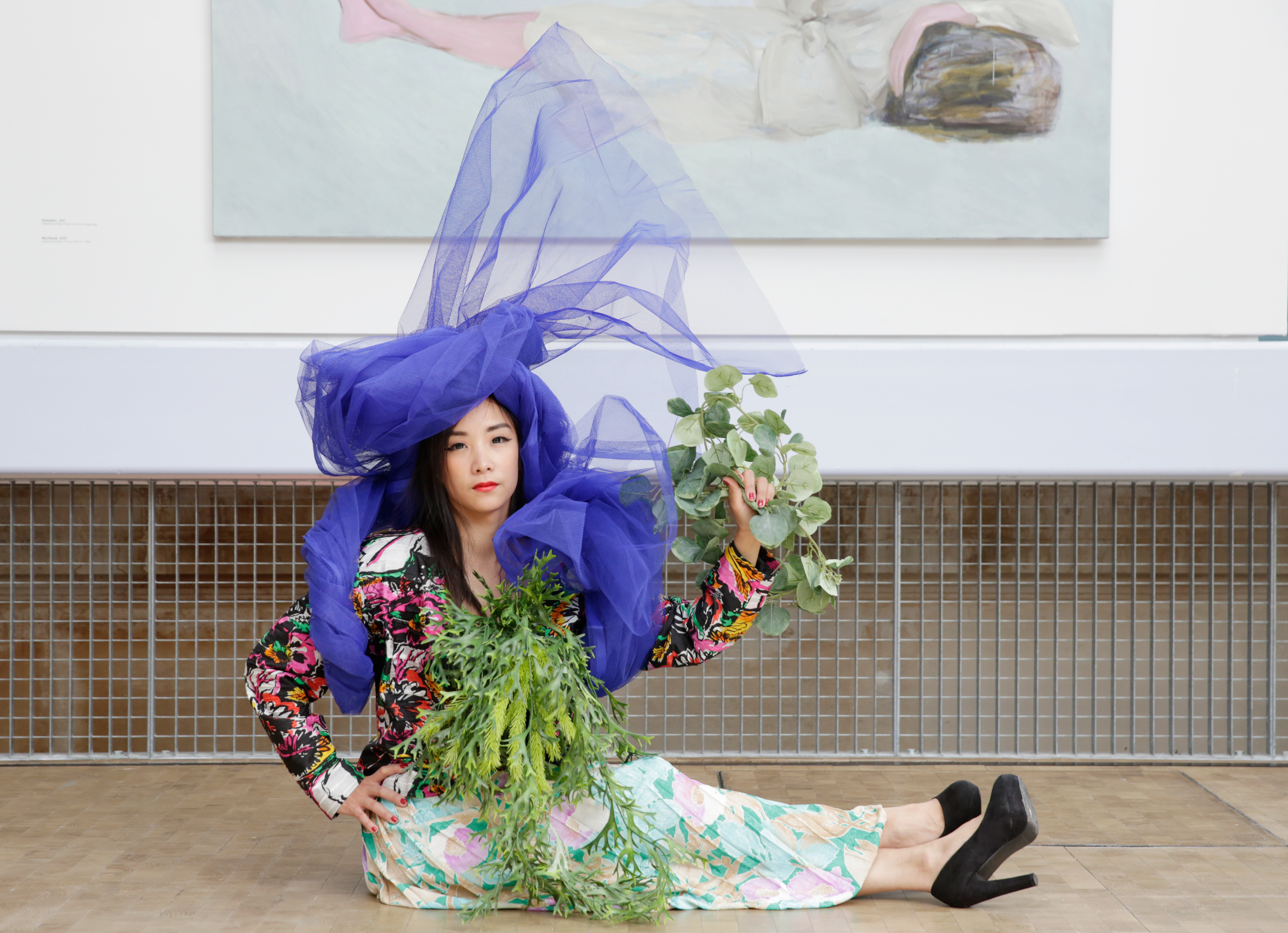shortlist live! 2022
Liz rosenfeld (USA/DE): i live in a house with a door
Photo by Alexa Vachon.
I Live in a house with a door, is a performance work in which Liz Rosenfeld explores the material of flesh through a narrative of cruising, erotic potential, environmental futures and discursive time. In a resistant relationship to metaphor, Rosenfeld collaborates and experiments with flesh as material and the possibilities it presents within its own autonomies and rhythms. Through dancing with breath and flesh, Rosenfeld culminates this experience with a science fiction text, where they are implicated in an erotic cruising scene with an invisible gas, called the Shimmer. The Shimmer effects both the physicality and emotionality of Rosenfeld's relationship to the body, while also implicating bodies of flesh in questions of environmental decline, queer sexuality and the potential of holes. As they engage in a duet with their flesh, Rosenfeld arrives at propositions of how the non-binary can transcend the markers of gender, offering the abundance of flesh as a material to serve a corporal resistance fuelled by the potential of radical erotic and intimate relationships. The title for this work is a quote from the book, "Time is a thing a body moves through" by T Fleischmann.
River Lin (TW): My Body is a Queer Library
Photo from My Body is a Queer History Museum, 2022 © Chloé Magdelaine - Lafayette Anticipations, Paris.
Conceived and devised by artist River Lin for the framework of Shortlist LIVE of ANTI Contemporary Art Festival and the Kuopio City Library, My Body is a Queer Library is work composed by a series of live actions such as dance, story-telling, workshop, fashion show and other acts in an actual library.
A library is a cultural, educational and scientific institution that organize and collects knowledge production open to the public. While a contemporary library today has also functioned as a cultural centre, performing cultural collectivity to engage with community members through events or public programs has been as well taken into account. In this context, the artist wonders what a queer library would look like when a library goes live through living bodies as a temporary library within an existing spatial structure of a library.
My Body is a Queer Library will be bringing together a mixed group of Europe or Finland-based performers as a durational takeover to open up discussions and question what makes a library, what makes a library queer, what a queer library look like, and how ‘queer’ can facilitate our practices and understandings of acknowledging our bodies as a container and collection of of knowledge, education and everyday life.
Concept, choreography, visual design & artistic direction: River Lin
Venue: Kuopio Main library.
Latai Taumoepeau (TO/AU): Ocean island mine
Photo by Sami Simic.
A woman, a 2000kg block of ice, a shovel, and the steady walk from point A to point B. Back and forth, she works the open-cut mines of the past into the future of climate change; excavating the solid white rock into invisibility.
What remains in the aftershocks of empire? Such effects reside in the corroded hollows of landscapes. The question is pointed: How do imperial formations persist in their material debris, in ruined landscapes and through the social ruination of people's lives?
- Ann Stoler cited in Katerina Teaiwa, 2015
Zinzi minott (uk): Black on black
Photo by Kofi Paintsil.
Black on Black is a solo dance performance by Zinzi Minott that explores Queerness, Blackness and the body as an archive.
The work interrogates dance as a form of labour and the limits of the body through the exhausting processes of repetition and duration. The 1h solo performance has been created from movement phrases donated to Zinzi by an extended network of Black dancers and artists. “If you could imagine a physical archive of dance”, asked Minott, “what nugget or phrase would you donate?”
In Black on Black, both dance and Blackness are archived physically, passed from body to body to form a physical archive of Black and Queer lineage. Minott uses duration, repetition and exhaustion to show the erasure of the Black dance anthology – and the larger body of Black cultural practice – in histories of dance and art. As her exhaustion builds, the erasure becomes more evident. What if movement, handed on and shared, is the embodied language of Black lives across generations and geolocations? Perhaps the body itself, and a shared physical vocabulary, is the most tangible archive for remembering Black life and histories. Dance’s ephemerality is a tactic of resistance.
As Minott performs her solo, her phrases are altered, eroded by exhaustion, mirroring the ever-changing and always vulnerable existence of the archive. The work makes plain the fallible nature of the body, of the archive, of performance and of Blackness, all subject to forces of erasure.
Minott will perform her solo amidst a multi-screen audio-visual installation consisting of archival footage and other accompanying material from Minott’s personal image collection and footage of Minott with the other collaborating choreographers and dancers. It is also accompanied by a newly commissioned score composed by Gaika.
Black on Black aims to spark a nuanced discussion that attends to the lived and embodied intersections of race, class and gender in the aftermath of British colonialism. This is the first living archive of Black dance [in the UK?].





